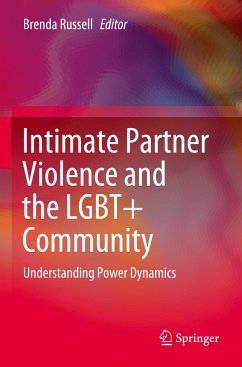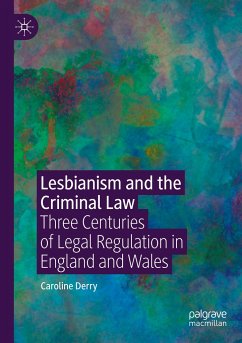
Intimate Partner Violence and the LGBT+ Community
Understanding Power Dynamics
Herausgegeben: Russell, Brenda

PAYBACK Punkte
57 °P sammeln!
Intimate Partner Violence is a serious social problem affecting millions in the United States and worldwide. The image of violence enacted by a male aggressor to a female victim dominates public perceptions of intimate partner violence (IPV). This volume examines how this heteronormativity influences reporting and responding to partner violence when those involved do not fit the stereotype of a typical victim of IPV. Research and theory have helped us to understand power dynamics about heterosexual IPV; this book encourages greater attention to the unique issues and power dynamics of IPV in se...
Intimate Partner Violence is a serious social problem affecting millions in the United States and worldwide. The image of violence enacted by a male aggressor to a female victim dominates public perceptions of intimate partner violence (IPV). This volume examines how this heteronormativity influences reporting and responding to partner violence when those involved do not fit the stereotype of a typical victim of IPV. Research and theory have helped us to understand power dynamics about heterosexual IPV; this book encourages greater attention to the unique issues and power dynamics of IPV in sexual minority populations. Divided into five distinct sections, chapters address research and theories associated with IPV, examining the similarities and differences of IPV within heterosexual and gender minority relationships.
Among the topics discussed:
Research methodology and scope of the problemPrimary prevention and intervention of IPV among sexual and gender minoritiesBarriers to help-seeking among various populationsPromoting outreach and advocacyCriminal justice response to IPV
With recommendations for intervention and prevention, criminal justice response and policy, Intimate Partner Violence and the LGBT+ Community: Understanding Power Dynamics will be of use to students, researchers, and practitioners of psychology, criminal justice, and public policy.
Among the topics discussed:
Research methodology and scope of the problemPrimary prevention and intervention of IPV among sexual and gender minoritiesBarriers to help-seeking among various populationsPromoting outreach and advocacyCriminal justice response to IPV
With recommendations for intervention and prevention, criminal justice response and policy, Intimate Partner Violence and the LGBT+ Community: Understanding Power Dynamics will be of use to students, researchers, and practitioners of psychology, criminal justice, and public policy.














